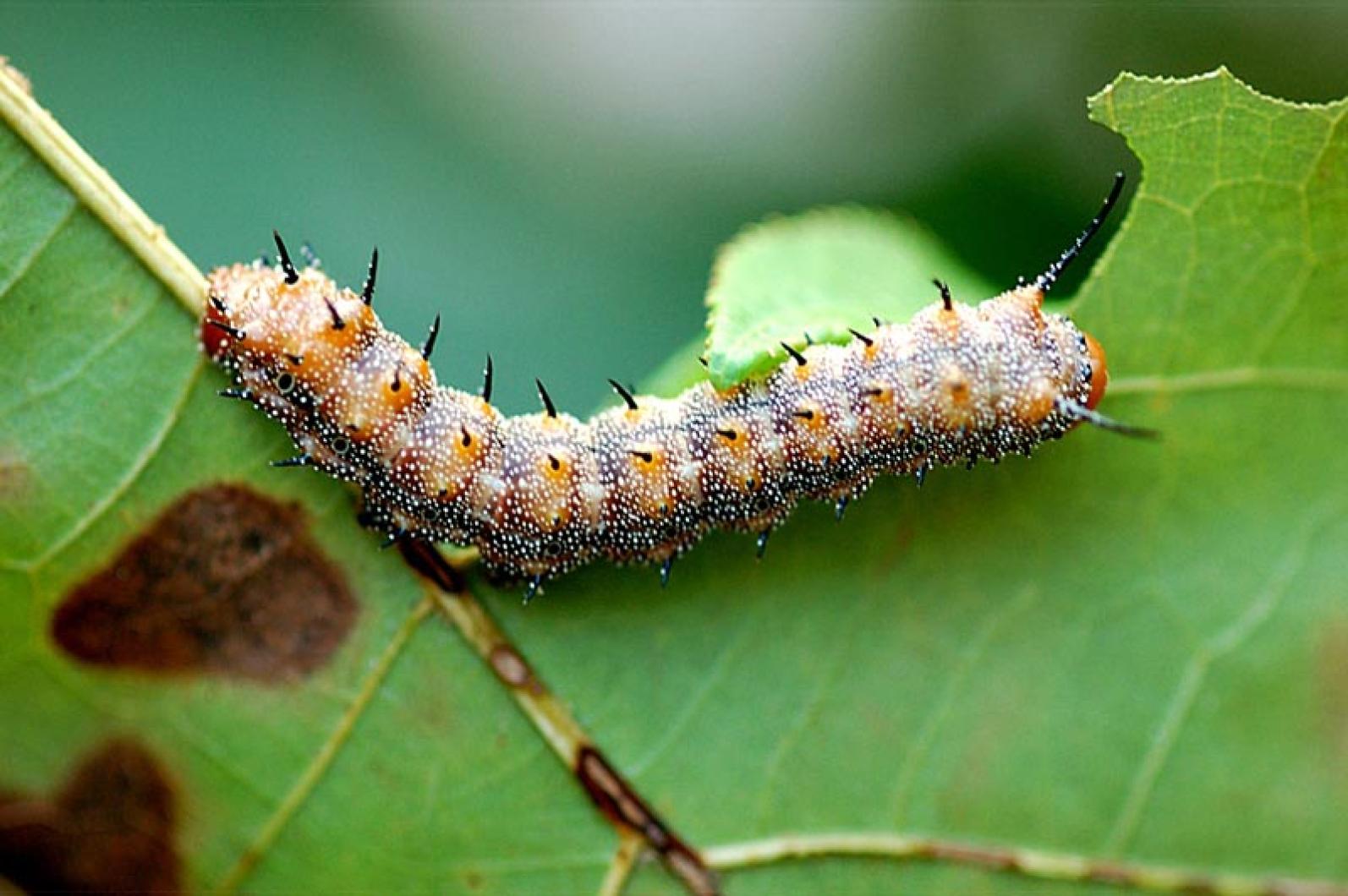The way to this caterpillar’s heart is through its stomach.
No doubt you are familiar with the eating machine that is the subject of this week’s article. These black caterpillars with orange stripes have been everywhere lately, in your trees, on your deck, crawling across the driveway and squishing under your feet.
Consider yourself (and your trees) lucky if you don’t know or haven’t seen the caterpillar in question. Orange-striped oakworms have been devouring their preferred foodstuff — oak trees — voraciously over the past few weeks. A few of my favorite oaks have been stripped almost completely of their leaves by this persistent pest. Or make that, pests. Oakworm caterpillars are never alone. As gregarious gatherers, they aggregate in large numbers. The orange-striped oakworm caterpillar never misses a meal. Be it breakfast, lunch or dinner, this worm won’t be late. Nor will this muncher miss a snack. In fact, the life of an orange-striped oakworm caterpillar is one big everlasting all-you-can-eat buffet.
And, since we know that what goes in must come out, a mention must be made of the copious amounts of frass, or caterpillar droppings, which seem to be raining down below the affected trees.
Fortunately, for my trees (and yours), it won’t be heartbreak, since they will survive the assault. Orange-striped oakworms are fall defoliators, which are much preferable to spring leaf-eaters. In the fall, trees have completed most of their photosynthesizing and growth and are ratcheting down their activity to prepare for winter dormancy. Only already stressed trees, such as those suffering from drought or disease, are likely to be negatively affected.
After these caterpillars have eaten their fill, they will drop to the ground and crawl around to find a suitable place to pupate. Orange-striped oakworms will nestle themselves below the soil and turn into a dark brown or black pupa to overwinter. In the summer, they will emerge as orange-striped oakworm moths, ready to begin the cycle anew.
Likely, you have seen this furry-bodied moth earlier in the summer around your porch light. They are distinctive pink-to-orange moths with a single white spot in the middle of their forewing. Keep an eye on them, as they will be laying the 500 or so eggs that will become the voracious caterpillars. If you catch them in the act and find those eggs, just cut the affected leaves off of the tree and dispose of them before they turn into those dreaded black and orange crawlers.
As much as I might malign them, the orange-striped oakworm will remain undeterred and unaffected by my slander or others’ disdain. Indeed, they will continue along without a care, because, to paraphrase American journalist John Gunther, “All happiness depends on a leisurely meal,” and these insects have had their fill!
Suzan Bellincampi is director of the Felix Neck Wildlife Sanctuary in Edgartown.




Comments
Comment policy »